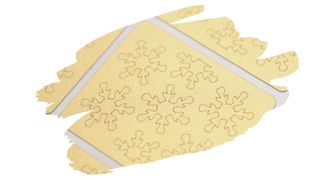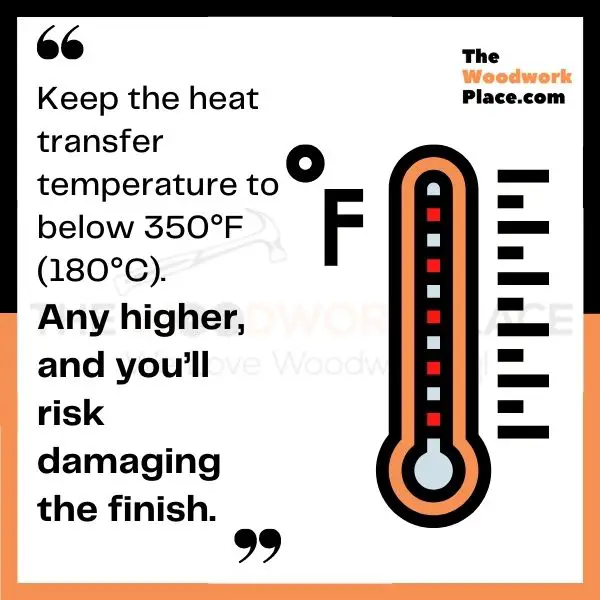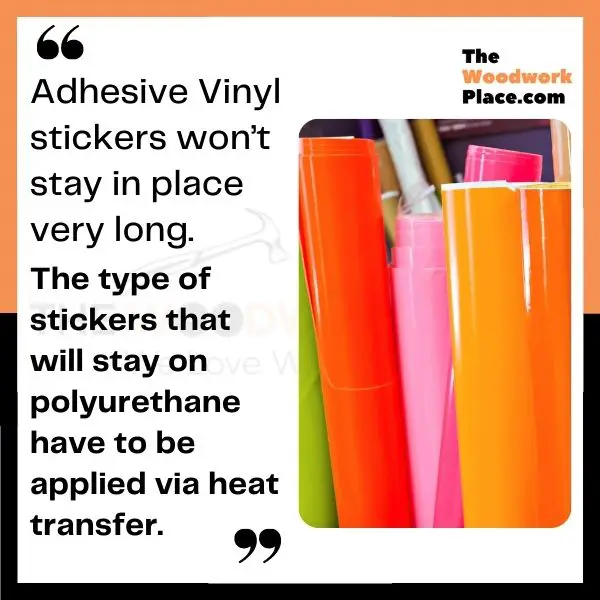Are you struggling to get those Cricut vinyl stickers to just, well, stick?
Or maybe, you’ve managed to get them to stay on your yard sign or wooden box. But, after a time, they just seem to peel right back off again?
Heat Transfer Vinyl, (also referred to as HTV for short), are stickers that require high heat – and a bit of forceful pressure – to stick to wood, fabric, and even metal surfaces.
But, will vinyl stickers stick on to a smooth polyurethane finished surface?
A polyurethane sealer, once it is cured, will leave behind a smooth unwrinkled finish that vinyl stickers can easily stick to. So, that vinyl sticker shouldn’t have any problem staying on a polyurethane surface.
But, the key word here is ‘cured’.
Polyurethane needs to be both dry and cured, before you go applying any vinyl over it.
If not, the oils (in an oil based polyurethane) can cause problems for vinyl. Even an uncured water-based polyurethane sealer can make a vinyl sticker peel off.
What Is The Difference Between Dry And Cured? When polyurethane is dry, we’re saying that it has gone through an evaporation process, turning from a wet liquid into a solid film. However, when polyurethane is cured, we’re describing a chemical process that has turned it from a solid film into a hard durable coat.
So, what do you do if your vinyl stickers struggle to stay on polyurethane?
Well, in this post, we will cover precisely why that vinyl sticker is peeling off. You’ll also discover whether or not polyurethane can even take the heat of a transfer in the first place.
Plus, we will dive into the best practices you can follow to make sure those stickers stick every single time. Let’s get into it…

This post may contain affiliate links to products that we receive a commission for (at no additional cost to you). Learn more here.
First Off, Why Doesn’t Permanent Vinyl Stick To Bare Wood?
In theory, permanent vinyl shouldn’t have any problem sticking to natural timber. It should stick to it just as well as it would on most any other surface.
However, natural wood isn’t flawlessly even. Far from it.
Wood has nicks and grooves, pores and gaps that make it rough terrain for any kind of sticker.
Plus, if that wood has had oil-based wood stain added to it, (or it is a type of wood that is already naturally oily), then those oils will make life hard for vinyl too.
In a perfect world, (before you applied that vinyl sticker), you would make sure that natural wood was absolutely even, blemish free, and had no oils on it.
In the real world, however, things are rarely that simple. Sanding wood smooth can be difficult (especially on softer more pliable wood types such as Balsa wood).
And you shouldn’t have to feel the need to give up on your wood stain color of choice – just so that you can apply a sticker on to that sign afterward.
Related Post: What Type Of Wood Can A Cricut Maker Cut? [A Quick Guide]

So, How Do You Keep Vinyl From Peeling Off Wood?
By making sure that wooden surface vinyl is applied to is as smooth, (and as solvent free) as possible.
Things such as dust, dirt, and grease can effect adhesion. Also, while splinters and cracks in the wood itself won’t prevent vinyl from sticking, they can prevent it from layering on smoothly.
Now, the easiest way to create this smooth surface is by adding a finishing coat onto wood. That way, instead of trying to get natural wood to be perfectly level, you can simply apply the vinyl onto the level finish instead.
And this is where polyurethane comes in. This wood sealer is tough, long lasting, and once it is dry, it leaves a plastic-like unwrinkled flat surface behind. It can even handle very high temperatures to boot (which will come in handy… but more on that later).
Basically, if you want that Cricut permanent vinyl to stick to wood, you ideally should give it something else to stick to. And you can do this by adding a sealing base coat of polyurethane between vinyl and bare wood.
Related Post: 7 Clever Cricut Maker Wood Projects
Will Any Type Of Stickers Stick To Polyurethane?
Not quite. Sticky vinyl, (which are also known as ‘adhesive vinyl’), won’t stay in place very long.
The type of stickers that will stay on polyurethane have to be applied via heat transfer. In other words, only apply permanent heat transfer vinyl to polyurethane finishes.

And Will Heat Transfer Vinyl Stick To Polyurethane Easily?
It will. But only if, (and this is fairly important), the polyurethane finish is wholly cured.
If you try to transfer vinyl onto polyurethane before curing’s completed, then the chemicals, oils and other additives in polyurethane will work hard to shrug off that sticker.
Now, while a fast drying polyurethane product can dry in as little as 2 hours, it can in fact take up to 30 days for it to cure. So, patience is key here.
Related Post: Polyurethane Not Drying? What You Can Do To Fix It
Other than that, simply make sure you’ve wiped the cured polyurethane surface clear of any dust and dirt – using a dry lint free cloth – before you start transferring.
But, Can You Safely Heat Transfer Vinyl Over Polyurethane? Won’t The Heat Degrade Polyurethane?
Polyurethane is pretty durable stuff, and it can handle surprisingly high temperatures. Still, even this hard-wearing sealer has it’s limits.
If polyurethane is exposed, (even for a short time), to temperatures exceeding 350°F (180°C), then it can start to break down.
Now, the optimal temperature for heat transfer vinyl (on most typical irons) is 315°F (157°C). Which is underneath polyurethanes temperature ceiling.
Even Circut Iron-on Designs are applied at temperatures of 340°F (171°C). Which is just shy of polyurethanes limit.
In short, keep the heat transfer process quick, brief, and to the point. Press for no longer than 10-15 seconds – and not a moment longer.
If you do that, then you needn’t worry about wrecking your wood crafts clear polyurethane finish.
Do You Need To Seal Permanent Vinyl? No, you don’t. The only time it would be a good idea to seal it, is if that vinyl will be highly exposed to moisture and humidity. In which case, you can waterproof it by sealing it with an epoxy resin top coat.
Related Post: Can You Apply Epoxy Over Polyurethane? (Your Questions Answered!)
To Sum Up…
At the end of the day, vinyl should stick to polyurethane fairly easily.
Once polyurethane has cured, it’s smooth plastic surface is perfect for vinyl transfers, as long as you stick to the following:
- Always wait for that polyurethane to cure through first. Depending on the brand, this can take up to 30 days.
- Keep the heat transfer temperature to below 350°F (180°C). Any higher, and you’ll risk damaging the finish.
- And, don’t use adhesive stickers. Only heat transfer stickers will stay on polyurethane.


![What Type Of Wood Can A Cricut Maker Cut? [A Quick Guide] what wood can cricut maker cut](https://www.thewoodworkplace.com/wp-content/uploads/2021/11/What-Type-Of-Wood-Can-A-Cricut-Maker-Cut-128-150x150.jpg)
